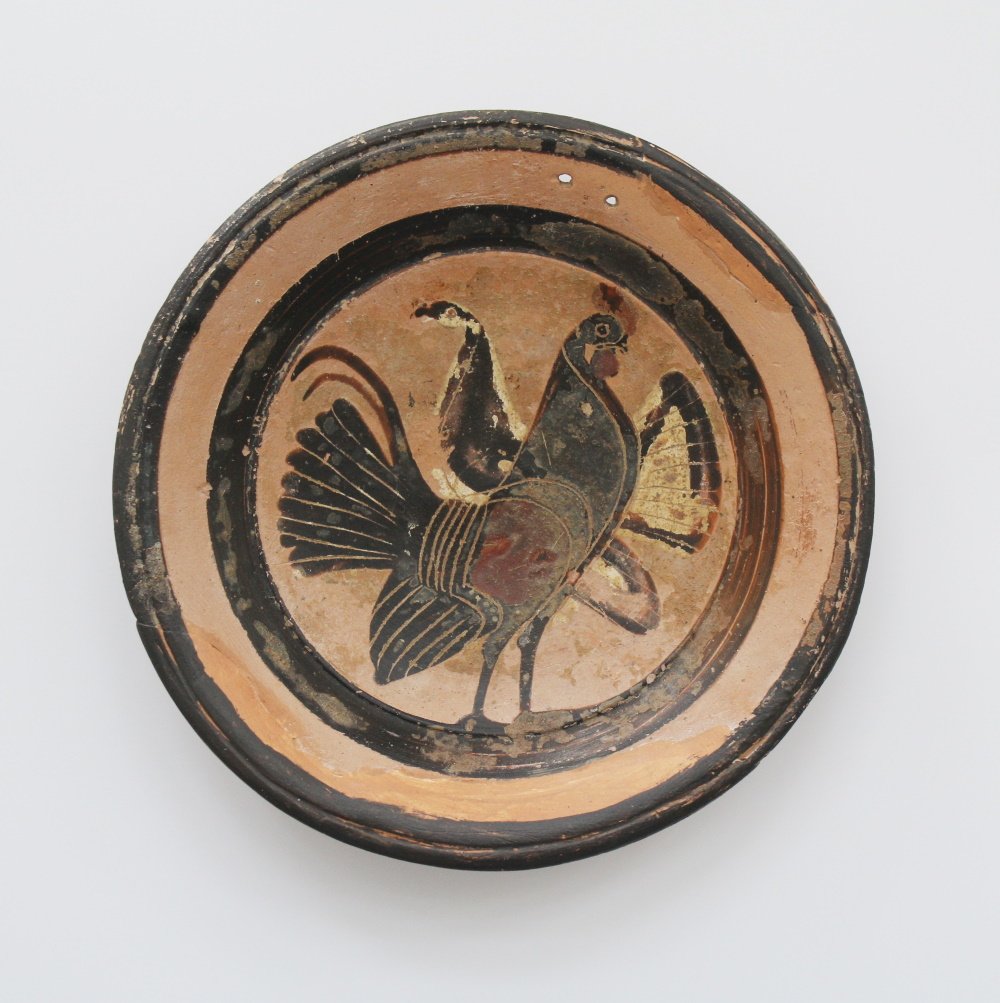Cultural contacts of the Greeks with the population groups living in Anatolia led to the domestic fowl becoming native to the Greek area in the 6th century BC. In Greek texts and pictorial representations of the 8th and 7th centuries BC, the cock and hen are very rarely found. Then, a century later, they are not only frequently seen on ceramic products of different styles, but seem to have been geographically common in Greece and Magna Graecia in general. This plate was made in Asia Minor and belongs to the Clazomenian style. (AVS)
en









